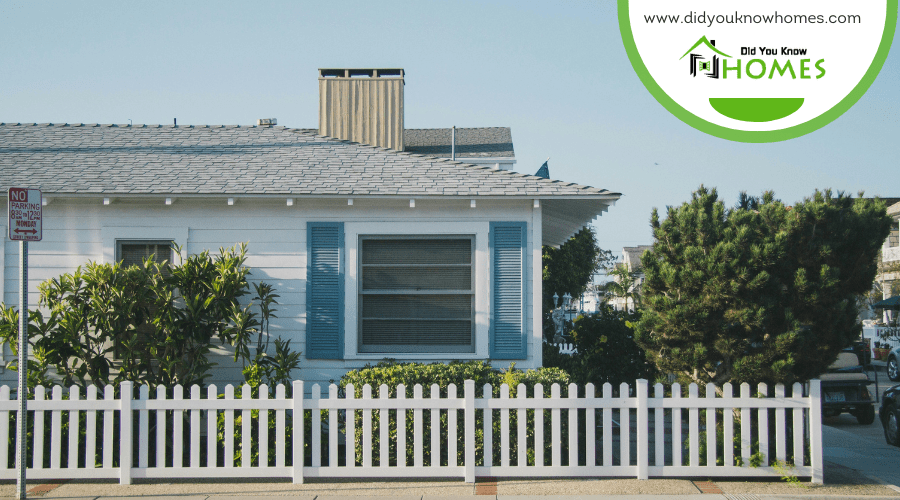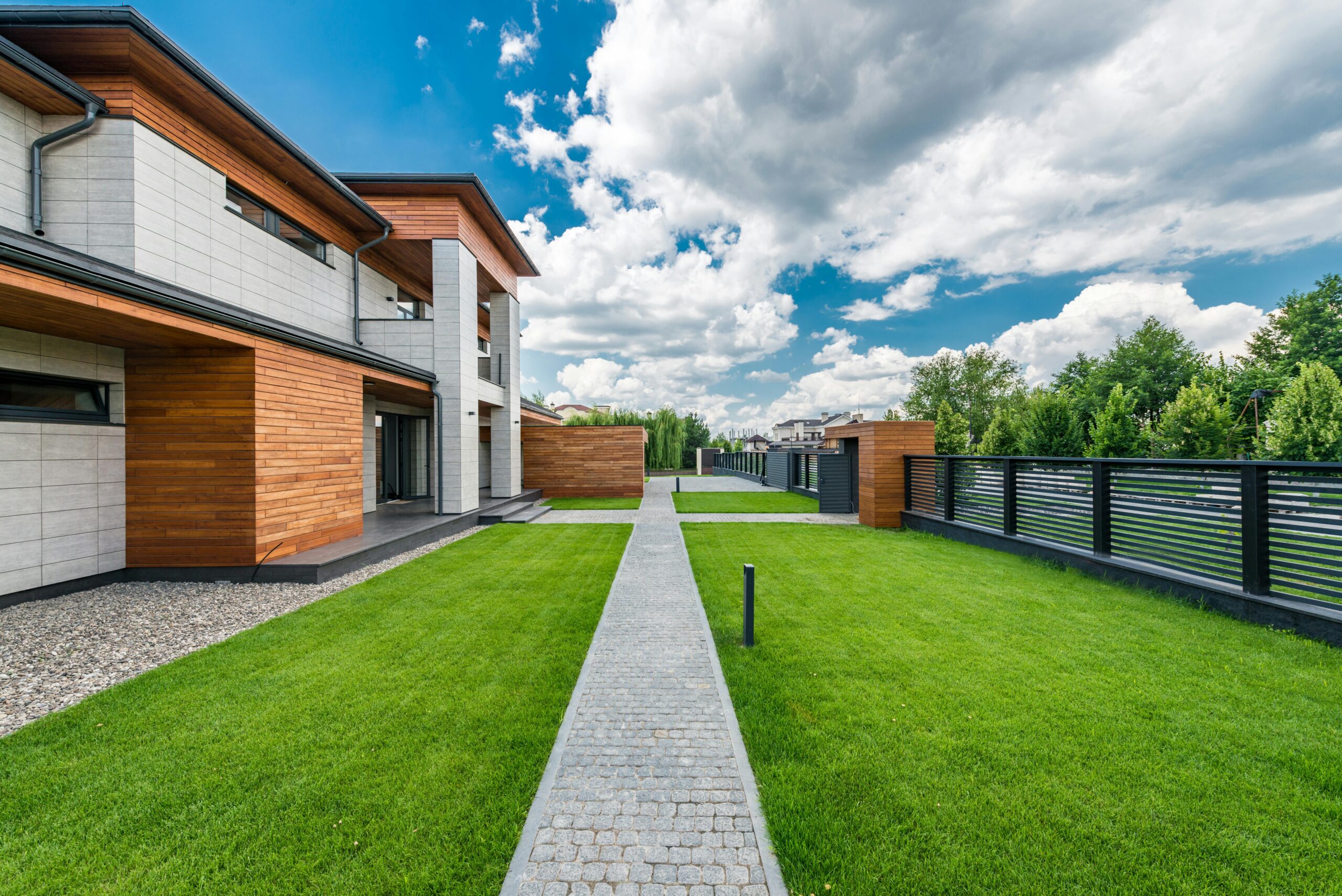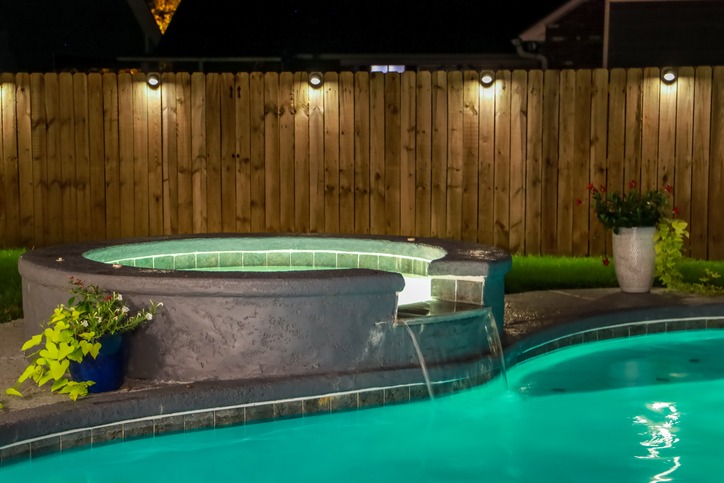When choosing your fence material, think about your climate, the look you want, and how much maintenance you’re up for. From wood to metal, each option has its charm and can enhance your garden’s theme. Imagine your fence not just as a boundary, but as a canvas. Integrate climbing plants for privacy and beauty. Match fence colors with your garden for a unified look, and don’t shy away from lighting to make your fence stand out at night. Remember, mixing fence heights can add visual interest. You’re not just building a fence; you’re crafting an outdoor haven. There’s more to explore in creating a space that’s uniquely yours.
Key Takeaways
- Choose a fence material that complements both your home’s architecture and your garden’s theme for cohesive landscape design.
- Integrate climbing plants and vines on fences for enhanced privacy, aesthetics, and a seamless blend with the garden.
- Adjust fence heights to balance privacy needs with maintaining an open, inviting garden space, while respecting local regulations.
- Incorporate decorative elements like latticework, wide cap pieces, or a pergola into the fence design for added visual interest and functionality.
- Use lighting along the fence to highlight garden features, enhance security, and create a welcoming ambiance during nighttime.
Selecting Fence Materials
When choosing the material for your home fence, it’s important to consider factors like climate, aesthetics, maintenance, and budget to find the perfect fit. Fencing materials range from classic wood to low-maintenance vinyl, elegant metal, and sustainable composite options. Each material brings its unique charm and functionality to your outdoor space, making it vital to choose the right one that complements your garden’s theme and your lifestyle.
Wood fences add a versatile and classic touch, fitting seamlessly with various garden styles. However, they do require regular upkeep to maintain their beauty. If you’re looking for something more durable and weather-resistant, vinyl fences might be your best bet. They provide longevity without the need for constant care. For those valuing security alongside elegance, metal fences—be it iron, aluminum, or steel—offer robust solutions. Finally, composite fences cater to the eco-conscious homeowner, providing a wood-like appearance without the hassle of maintenance.
Incorporating fencing as a design element in your landscape not only enhances security and privacy but also elevates the overall aesthetics of your outdoor space. Carefully selected fencing materials can harmonize with plants and other elements, creating a cohesive and inviting garden environment.
Creative Fence Integrations
Now, let’s explore how you can transform your fence into more than just a boundary. Imagine climbing plants weaving through the slats, adding life and color, while coordinated fence hues complement your garden’s theme. At night, strategic lighting can turn your fence into a mesmerizing backdrop, enhancing the ambiance of your outdoor space.
Climbing Plants Enhancement
Integrating climbing plants like ivy and flowering vines can dramatically transform the look of your fence, adding a lush, green touch to your outdoor space. These climbers not only enhance the natural landscape but also boost the visual appeal of your yard. They’re a fantastic way to intertwine nature with structure, creating a seamless blend that elevates your garden’s aesthetics.
| Climbing Plants | Benefits |
|---|---|
| Ivy | Enhances privacy, air quality |
| Flowering Vines | Adds color, attracts wildlife |
| Clematis | Offers stunning blooms |
| Jasmine | Provides a sweet scent |
Incorporating these plants into your fence design not only softens the look of your fence but also offers a natural, beautiful solution for more privacy.
Fence Color Coordination
Choosing the right fence color can transform your outdoor space, creating a cohesive and visually appealing garden environment. Coordinating fence colors with your garden boosts visual harmony, making the area look well-thought-out and polished. Matching fence color to your home’s exterior merges the whole property together, offering a seamless shift from structure to nature. Don’t shy away from contrasting fence colors; they can spotlight garden features, adding depth and interest. Neutral fence colors like white or gray serve as a versatile canvas, complementing various landscaping styles without overwhelming the senses. For those looking to make a statement, bold fence colors inject personality and flair, turning a simple boundary into a standout feature. Remember, fence color coordination is key to achieving a balanced and inviting outdoor space.
Lighting for Night Ambiance
As the sun sets, adding lighting to your fence can transform your garden into an enchanting evening retreat. Solar-powered or LED lights along the fence line cast a magical ambiance, highlighting the architecture and making your outdoor space inviting.
| Element | Impact |
|---|---|
| Solar-powered Lights | Energy-efficient, illuminate without added cost |
| LED Lights | Bright, long-lasting for evening ambiance |
| Fence Design | Architecture enhances with strategic lighting |
Incorporating lighting into your landscape design isn’t just practical; it adds a touch of enchantment. Well-placed lights make your outdoor area attractive, beckoning you and your guests to linger in the soft glow. It’s simple: lighting up your fence turns your garden into a nighttime haven.
Functional Fencing Uses
Fences serve more than just demarcating your property’s boundaries; they create distinct spaces for your various outdoor activities. By thoughtfully integrating fencing materials into your landscape design, you can carve out essential uses that enhance both privacy and curb appeal. Imagine a tranquil, secluded corner for relaxation, shielded from prying eyes, or a vibrant, open area for social gatherings, all defined by the style and structure of your fence.
Choosing the right materials for your fencing is vital. Whether it’s the natural warmth of wood, the durability of vinyl, or the elegance of wrought iron, each contributes uniquely to your landscape’s aesthetic and functional needs. These materials can also support climbing plants and vines, adding a layer of greenery and visual interest that enhances the overall charm of your outdoor space.
Moreover, fences provide a shield against wind and noise, creating a more comfortable and enjoyable outdoor environment. They’re not just barriers; they’re an integral part of your home’s exterior that, when designed well, can greatly enhance your home’s curb appeal and, consequently, its value. Remember, a fence isn’t just a boundary—it’s a statement in your landscape design.
Fence Accessorizing Tips
Now, let’s look at how you can elevate your fence’s style and functionality. Choose colors that complement your home and garden for a cohesive look. Pick durable materials that withstand the elements, and don’t forget to integrate lighting to showcase your fence night and day.
Choosing Complementary Colors
Selecting the right color for your fence can dramatically enhance your home’s curb appeal. By picking fence colors that complement your home’s exterior paint, you create a cohesive look that’s aesthetically pleasing. For a more dynamic effect, consider contrasting colors to make your fence a standout feature. This adds visual interest and makes your landscape pop. Use color swatches to make sure the shades harmonize with your home, creating a balanced appearance. Opting for neutral tones like white, gray, or black offers a timeless appeal, while bold or vibrant colors can give your home a modern edge. Remember, the goal is to achieve a balance that highlights your home’s best features without overwhelming the eye.
Selecting Durable Materials
When choosing materials for your fence, opt for durable options like wrought iron, steel, or aluminum to make sure it lasts for years. These materials not only offer unbeatable durability but also come with powder-coated finishes that fight against rust, corrosion, and fading, ensuring your fence design remains pristine. Don’t shy away from adding decorative elements such as finials, scrolls, or post caps to give your fence a personal touch while maintaining its strength. These materials are known for their low maintenance requirements, allowing you to enjoy a beautiful, hassle-free fence. Plus, selecting materials that match your home’s exterior style will create a seamless and integrated look, elevating the overall aesthetic of your landscape.
Integrating Lighting Features
Integrating lighting features into your fence design can instantly elevate your outdoor space, making it both inviting and safe at night. Consider solar-powered or LED lights to enhance the architecture of your fence and create an enchanting evening atmosphere. This practical and aesthetic feature transforms your outdoor area into a functional space well after sunset. By highlighting your fence’s design, you not only boost its aesthetic appeal but also increase safety and visibility in your yard. Choose lighting fixtures that complement your fence style and overall landscape design for a cohesive look. Utilizing fence lighting effectively turns your outdoor space into a welcoming and beautiful environment, perfect for either entertaining or relaxing. Embrace these tips to make your fence an integral part of your landscape design.
Customizing Fence Height
Tailoring your fence’s height can greatly influence the look and feel of your outdoor area. Opting for taller fences, at 6 feet or higher, boosts privacy and security, letting you enjoy your yard without prying eyes. On the flip side, lower fences maintain an open, spacious vibe, connecting you more with the surrounding landscape. By mixing fence heights, you introduce visual interest and variation, elevating the overall aesthetic of your outdoor space.
Adjusting fence heights based on surrounding landscape features guarantees a harmonious design. This customization lets you highlight certain areas, like a garden or a patio, making them stand out or blend seamlessly with the rest of your yard. But here’s the kicker: You’ve got to stay compliant. Local regulations on fence height are there for a reason. They ensure legal adherence and respect neighborhood guidelines. So, before you engage in transforming your fence, check these regulations to avoid any hiccups. Customizing your fence height not only meets your privacy and aesthetic needs but also keeps you in good standing with the law and your neighbors.
Fence Design Enhancements
To elevate your outdoor space, consider adding decorative elements to your fence design for both style and function. Integrating artful fence features like wide cap pieces, latticework, and curved edges not only enhances the visual appeal but also serves practical purposes. For instance, using decorative hardscape pieces can add a touch of elegance, while privacy screens created from latticework doors offer seclusion with an artistic flair.
Incorporating climbing vines can soften hardscape edges, bringing a natural and lush feel to your outdoor area. Likewise, a pergola integrated into the fence design not only adds privacy but also provides a structured area for plants and shrubs to thrive, creating a secluded garden oasis.
Here’s a quick guide to enhance your fence design:
| Enhancement Feature | Description |
|---|---|
| Decorative Hardscape | Wide cap pieces and latticework add elegance. |
| Privacy Screens | DIY latticework doors for seclusion with style. |
| Climbing Vines | Soften edges and add natural beauty. |
Practical Fence Applications
Fences serve as both privacy protectors and essential space dividers in your yard. They’re an important design element, offering security while crafting distinct areas for various activities. Imagine carving out a serene garden nook or a lively entertainment space, all shielded from prying eyes. Your fence can do just that, blending seamlessly with your landscape’s natural beauty.
Beyond privacy, fences excel in reducing outside noise and buffering against strong winds. This makes your outdoor haven more tranquil and enjoyable. They’re not just barriers; they’re your first line of defense against the elements.
But fences offer more than just practical benefits. They’re a canvas for adding greenery and texture to your yard. Supporting climbing plants and vines, your fence can transform into a living wall, enhancing the natural appeal of your space.
Incorporating a fence into your landscape design isn’t just about functionality. It’s also about elevating your home’s curb appeal and, ultimately, its value. Choose a fence that complements your home’s architecture and landscape design, creating a cohesive look that stands out. Remember, a well-thought-out fence design is a smart investment in both your privacy and property.
Frequently Asked Questions
Do You Landscape Before or After Fence?
You’ll decide whether to landscape before or after fencing based on design compatibility, soil assessment, and zoning laws. Consider the project timeline and aim for visual integration, ensuring your fence planning aligns with your vision.
How Do You Landscape Around a Fence?
To landscape around a fence, you’ll want to add climbing plants, guarantee color coordination, and incorporate seasonal blooms. Don’t forget about mulching techniques, lighting options, and decorative accents to make it all pop.
How Can I Make My Fence Look More Attractive?
To make your fence more attractive, mix material contrasts and color schemes. Add decorative panels and fence art. Use climbing plants for a natural vibe, and enhance it with various lighting options for nighttime beauty.
Can You Plant Shrubs Next to a Fence?
Yes, you can plant shrubs next to a fence. Pick suitable shrub varieties, prep the soil, and consider growth. They’ll enhance privacy and require regular maintenance. Choose varieties wisely for seasonal interest and upkeep ease.
Conclusion
Concluding, you’ve observed how selecting the appropriate materials, getting inventive with integrations, and focusing on functionality can elevate your home’s fence. Don’t hesitate to accessorize, customize the height, and explore design enhancements for that perfect blend with your landscape. Remember, your fence isn’t just a boundary; it’s an extension of your home. So, immerse yourself, mix and match ideas, and make your fence not just practical but a standout feature of your outdoor space.





